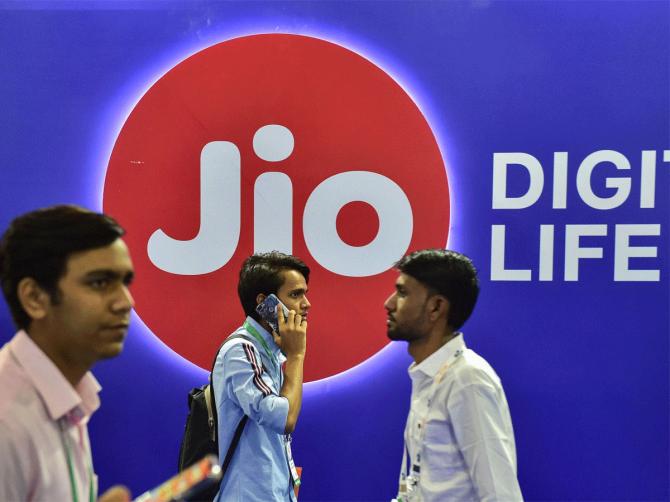Reliance Jio’s decision to acquire 700 MHz in combination with the possible use of an advanced standalone (SA) 5G network could give it an edge over its rivals, according to most analysts.

The dissenters argue that the stiff price tag touching Rs 40,000 crore to grab 10 MHz of spectrum in 700 to provide coverage for its SA 5G network which offers ultra-low latency (unlike non-standalone or NSA), has a long way to go in India in terms of finding use cases that can be monetised.
Globally, 700 MHz is a pivotal band which provides huge coverage, indoor penetration (especially useful in India where walls are thick) and is already considered by the European Union to be the ‘pioneer band’ for 5G, with 3.5 GHz and 26 GHz, both of which were auctioned in India recently.
Reliance Jio will be the only player to have not only spectrum straddling all the three bands but also, if it takes that call, will be the only player in India - and among the few in the world - which will leapfrog directly to the SA network.
In the SA network, the core which controls the network and the network are both on a 5G platform.
To boot, Jio has its own indigenous SA stack. In NSA 5G, the network continues to use a 4G core.
Bank of America Securities points out that ‘the combination of capacity (millimetre band) with coverage (700 MHz) would provide a telco like Jio with high throughput on its 5G network.’
It argues that while 5G SA still lags in handsets and applications, Jio is better placed than its peers to offer differentiated services.
Others are also convinced that the stiff price tag is justifiable.
“It will provide an advantage (to Jio) over Bharti Airtel in providing superior network coverage, which would require Bharti Airtel to increase spectrum acquisition in the sub 1 GHz band in subsequent auctions to match Jio’s network quality,” said Kotak Institutional Securities.
Nomura too argues that investor concerns about Bharti Airtel and the greater spectrum outgo it will need to buy the 700 band will only increase.
A different view is held by BNP Paribas which believes that Jio’s large investment in spectrum might be ahead of time and, as device penetration is still low, the potential of immediate monetisation seems low.
“As Jio was going for the SA network, it had to buy 700 MHz for coverage as its low bands like 850 MHz are already being used for 4G,” said a top executive of a network company.
“And the way it has bought additional spectrum in 1800 shows that, considering the huge data usage, Jio was stretched on spectrum availability.”
He pointed out that Bharti Airtel – as well as Vodafone Idea which did the same -they did not go for 700 as they are expected to go for a NSA network first and then to SA.
In an NSA network, there is the advantage of using the various overlays of 4G bands, such as 900, 1800, and 2100, to get coverage for 5G.
“Bharti Airtel can of course buy 700 later next year, maybe at the same price, as 15 MHz is still available, while it shifts to an SA network ” the same executive added.
He explained that an SA network offers ultra-low latency, enabling use cases such as the slicing of networks to create a customized network with SLAs for enterprises.
It also enables robotics, autonomous cars, and remote surgery.
“But the demand for such use cases and its monetization will take time in India and has not even picked up globally.
"So why go for SA now or buy 700 now?” he asked.
Clearly, Jio has taken a calculated gamble.
The 700 MHz band provides coverage for over 10 km.
This substantially reduces the cost of adding more towers and radios and makes the costs of rural deployment of 5G viable because only a few towers need to be installed to offer 5G in a remote area.
Overall, its operating costs are low.
The millimetre band provides high speed but low coverage and 3.5 GHz gives capacity but coverage of only 1-3 kilometres.
More importantly, 700 MHz provides far superior indoor coverage as it can penetrate walls, which 3.5 GHz would struggle to do.
What Jio seems bent on is disrupting the market.
According to sources, it has experimented with over 25 applications on its SA platform, both for enterprise and consumers.
It appears to believe that the time for an array of new use cases has arrived and, since it has the ready cash, it might as well go for it aggressively.












 © 2025
© 2025